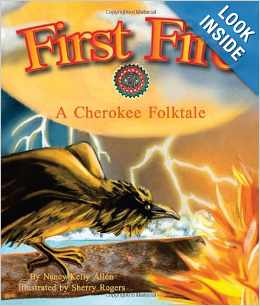2018 School Spending Survey Report
First Fire: A Cherokee Folktale
illus. by Sherry Rogers. 32p. (Common Core & Science Series). chart. maps. notes. photos. websites. Sylvan Dell. 2014. pap. $9.95. ISBN 9781628552164; Tr $17.95. ISBN 9781628552072; ebk. $9.95. ISBN 9781628552348.
COPY ISBN
A Cherokee pourquoi folktale explains both how a spider brought fire to the animals and the origins of particular animals' characteristics: e.g., ravens are black because their feathers were burned while attempting to transport fire. Back matter on Cherokee culture and territory is somewhat informative, but the book, marred by amateur illustrations and uninspired storytelling, is overall neither very useful nor engaging.
ALREADY A SUBSCRIBER? LOG IN
We are currently offering this content for free. Sign up now to activate your personal profile, where you can save articles for future viewing




Be the first reader to comment.
Comment Policy:
Comment should not be empty !!!